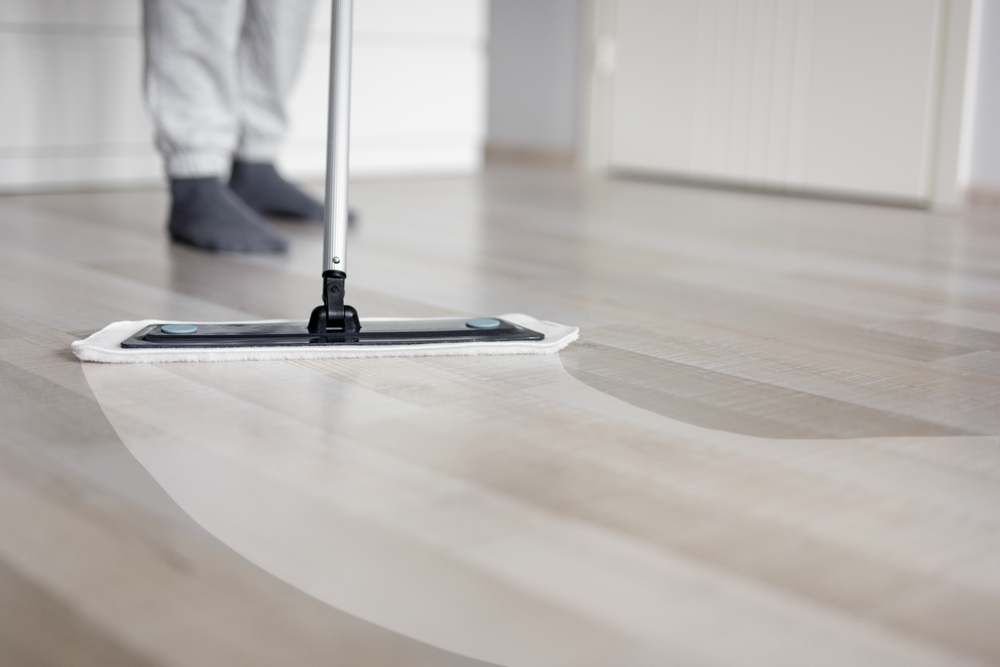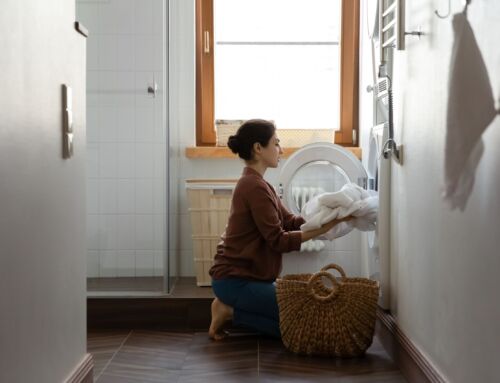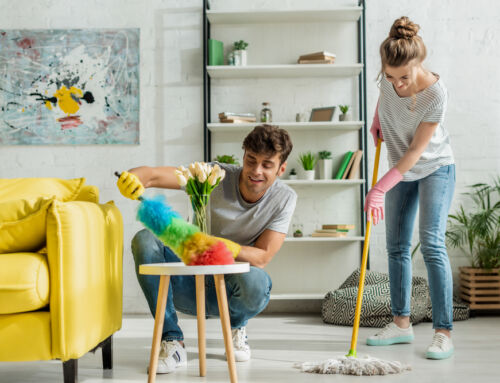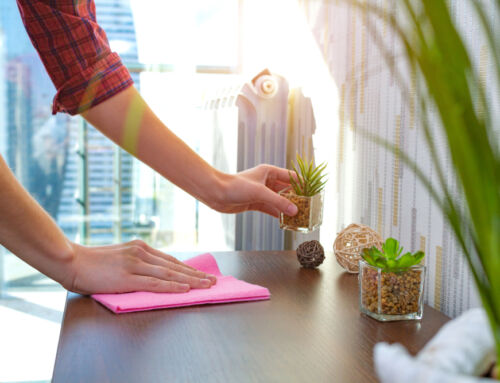The type of flooring you choose for your home or office can have a significant impact on the overall look and feel of the space. However, once you’ve installed your new flooring, it’s essential to take good care of it to maintain its appearance and longevity. In this blog post, we will guide you through the cleaning and maintenance process for different flooring types.
Hardwood Floors:
Ah, hardwood floors, the epitome of sophistication and elegance! They have been gracing homes for centuries, adding a touch of warmth and natural beauty to any space. But let’s face it, even the most robust and durable hardwood floors need a little TLC to keep them looking their best.
Now, if you want to keep those floors shining like new, you’ll need to do more than just a quick sweep now and then. The first step is to use a soft-bristled broom or vacuum to remove any dirt or debris from the surface of your floor. Don’t be tempted to use a hard-bristled brush, as this could scratch or damage the wood.
Next, it’s time to talk about cleaning. Here’s the thing: water is not your friend when it comes to cleaning hardwood floors. In fact, it can be downright damaging to the wood, causing it to warp or buckle over time. Instead, opt for a hardwood floor cleaner that’s specifically designed for this type of flooring.
When applying the cleaner, use a microfiber mop to gently remove any dirt or stains. These mops are incredibly effective at picking up dust and dirt, and they won’t leave any scratches or marks on your floors. Make sure you’re not using too much liquid when cleaning, as this can also damage the wood.
And don’t forget about maintenance! One of the easiest ways to keep your hardwood floors looking great is by placing mats or rugs in high-traffic areas. This will help prevent scratches and scuffs, and it’ll also catch any dirt or debris that might otherwise make its way onto your floors.
Tile Floors:
The perfect blend of function and form, bringing style and practicality to any space. They’re durable, easy to clean, and versatile, making them a popular choice for homes and businesses alike.
Now, if you’re the proud owner of a tile floor, you’re probably wondering how to keep it looking its best. Well, fear not, because we’ve got you covered! The first step in cleaning tile floors is to remove any dirt or debris from the surface. You can do this by sweeping or vacuuming with a soft-bristled brush attachment. This will prevent any small particles from scratching the tile’s surface.
Next up, it’s time to mix up a solution of water and a pH-neutral cleaner. You can find these cleaners at your local hardware or home goods store, and they’re specifically designed to clean tile without damaging its surface. Be sure to read the label carefully to ensure you’re using the correct amount of cleaner for your floor.
Now it’s time to get mopping! Use a clean mop to apply the solution to your tile floor. Be sure to wring out the mop thoroughly to avoid leaving excess water on the floor, which can seep into grout lines and cause damage. Once you’ve mopped the entire surface, go over it again with clean water to remove any residual cleaner.
One thing to keep in mind when cleaning tile floors is to avoid using harsh chemicals or abrasive tools that can damage the tile’s surface. This includes bleach, ammonia, and any cleaning products that contain acid. Stick with pH-neutral cleaners and gentle tools to keep your tile looking its best.
Carpeted Floors:
There’s nothing quite like sinking your toes into a plush, soft carpet after a long day. They add a cozy touch to any space, but let’s face it, they can be a bit of a pain to keep clean.
You see, carpets are notorious for trapping dirt, dust, and allergens, which can wreak havoc on our respiratory systems. That’s why regular vacuuming is essential to keep them clean and healthy. But not just any old vacuum will do – you’ll want to invest in a high-quality vacuum with a HEPA filter.
HEPA filters are designed to trap even the smallest particles, such as dust mites and pet dander, which can cause allergic reactions and respiratory problems. They’re an absolute must-have for anyone with carpeted floors.
When vacuuming, make sure you’re using the right attachment for your carpet type. A rotating brush attachment is ideal for high-pile carpets, while a suction-only attachment is best for low-pile carpets. Be sure to go over each section of carpet several times to ensure you’re removing as much dirt and dust as possible.
But here’s the thing – even the best vacuum in the world won’t be able to remove all of the dirt and grime that can accumulate deep in the carpet’s fibers. That’s why it’s important to schedule professional carpet cleaning every 6-12 months. Professional cleaners have access to high-powered equipment and cleaning solutions that can remove even the most stubborn stains and dirt.
Vinyl Floors:
They’re the unsung hero of flooring. Affordable, easy to install, and requiring minimal maintenance, it’s no wonder they’re a popular choice for homes and businesses alike. But just because they’re low maintenance doesn’t mean they don’t require some TLC every now and then.
The first step in cleaning vinyl floors is to remove any dirt or debris from the surface. You can do this by sweeping or vacuuming the floor using a soft-bristled brush attachment. This will prevent any small particles from scratching the surface of your vinyl.
Next up, it’s time to mix up a solution of water and a pH-neutral cleaner. You can find these cleaners at your local hardware or home goods store, and they’re specifically designed to clean vinyl without damaging its surface. Avoid using harsh chemicals or abrasive tools that can damage the vinyl’s surface – stick to pH-neutral cleaners and gentle tools to keep your floors looking great.
Now it’s time to get mopping! Use a clean mop to apply the solution to your vinyl floor. Be sure to wring out the mop thoroughly to avoid leaving excess water on the floor, which can seep into the seams and cause damage. Once you’ve mopped the entire surface, go over it again with clean water to remove any residual cleaner.
One thing to keep in mind when cleaning vinyl floors is to avoid using steam cleaners. While steam cleaning can be a great way to deep clean other types of flooring, it can cause damage to vinyl floors.
Concrete Floors:
They’re the ultimate in durability and low maintenance. Whether you’re looking for flooring for your garage, basement, or commercial space, concrete floors are an excellent choice. But just because they’re tough doesn’t mean they don’t need some attention every now and then.
The first step in cleaning concrete floors is to remove any dirt or debris from the surface. You can do this by sweeping or vacuuming the floor using a soft-bristled brush attachment. This will prevent any small particles from scratching the surface of your concrete.
Next up, it’s time to mix up a solution of water and a pH-neutral cleaner. You can find these cleaners at your local hardware or home goods store, and they’re specifically designed to clean concrete without damaging its surface. Avoid using harsh chemicals or abrasive tools that can damage the concrete’s surface – stick to pH-neutral cleaners and gentle tools to keep your floors looking great.
Now it’s time to get mopping! Use a clean mop to apply the solution to your concrete floor. Be sure to wring out the mop thoroughly to avoid leaving excess water on the floor, which can seep into cracks and cause damage. Once you’ve mopped the entire surface, go over it again with clean water to remove any residual cleaner.
If you have stubborn stains or dirt buildup on your concrete floors, a pressure washer can be a great tool to use. Be sure to use a low-pressure setting and stand back a few feet from the surface to avoid causing damage.
In Conclusion..
Regular cleaning and maintenance are essential for keeping your flooring looking great and lasting longer. Whether you have hardwood, tile, carpet, vinyl, or concrete floors, following the cleaning and maintenance tips outlined in this guide will help keep your floors in tip-top shape. Remember, the key is to be consistent and use the right cleaning products and tools for your specific flooring type.









